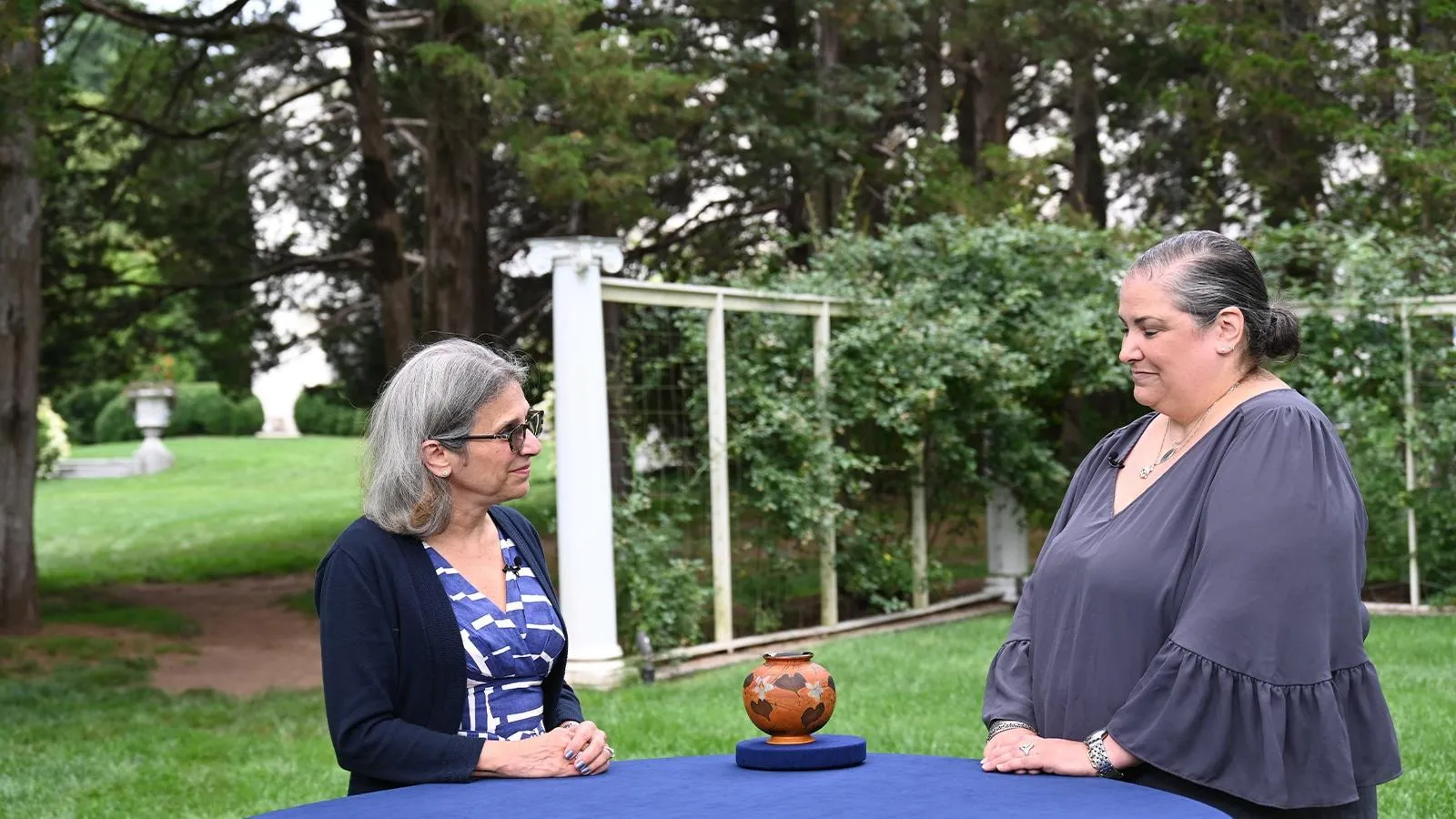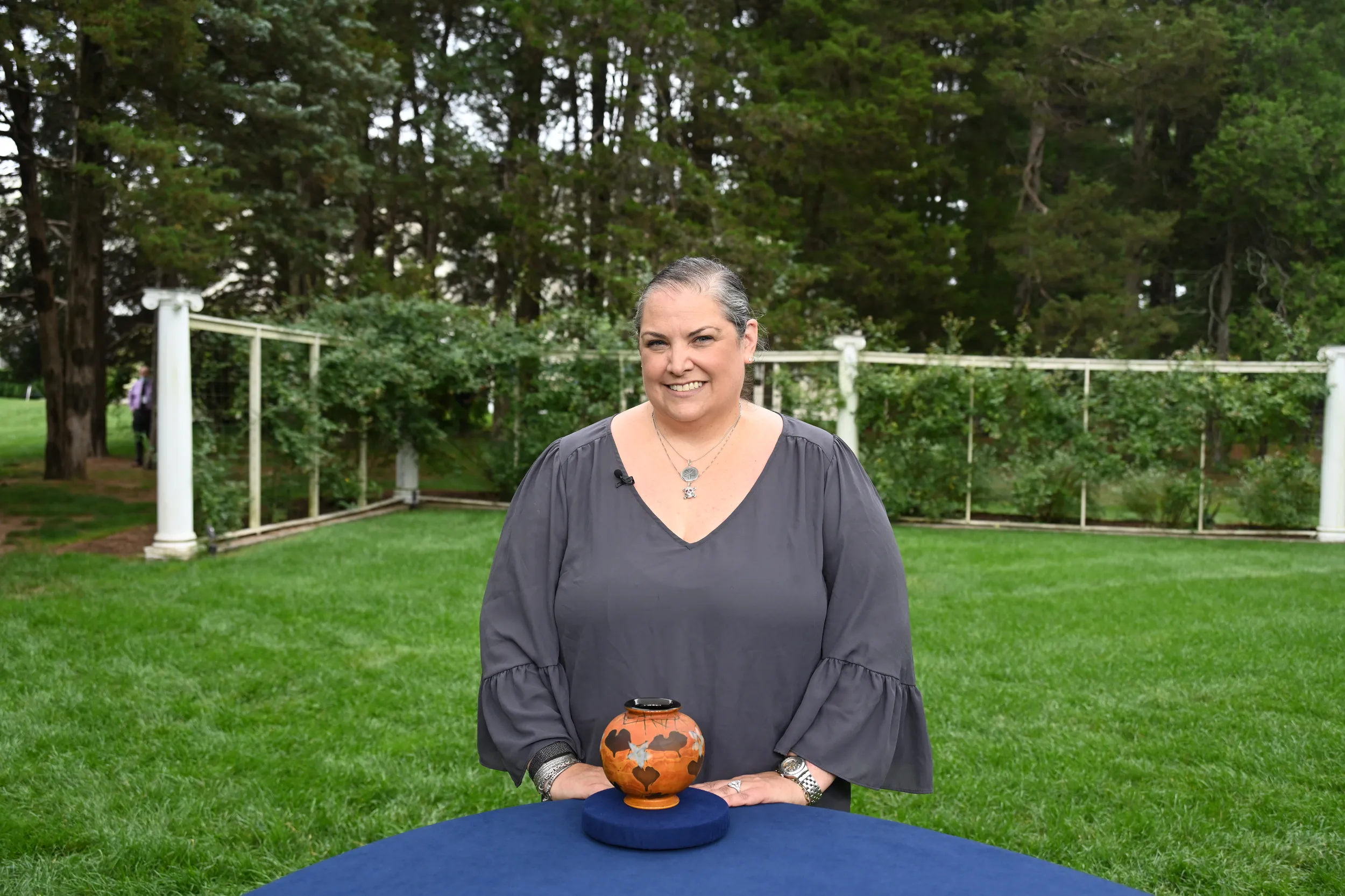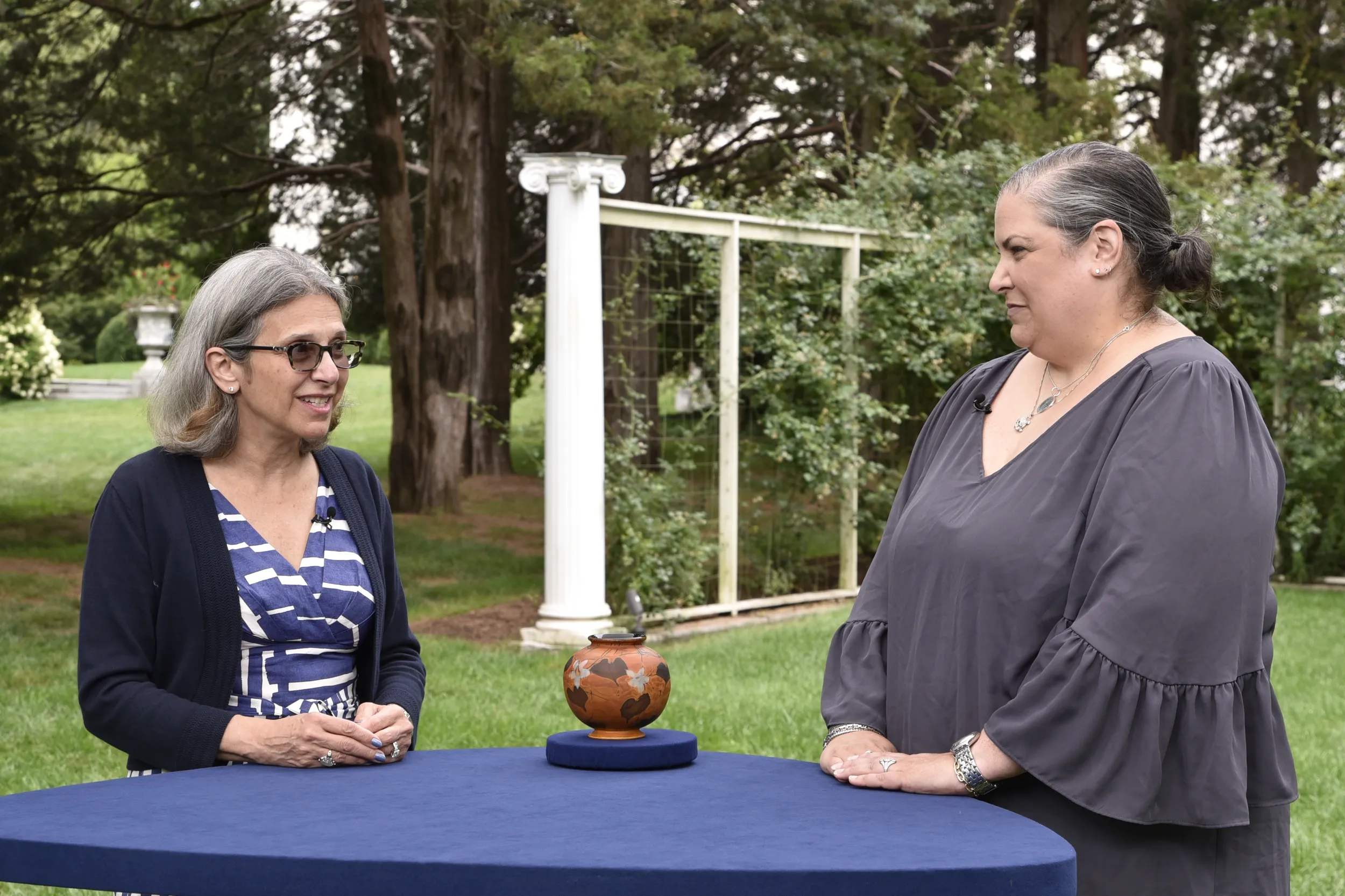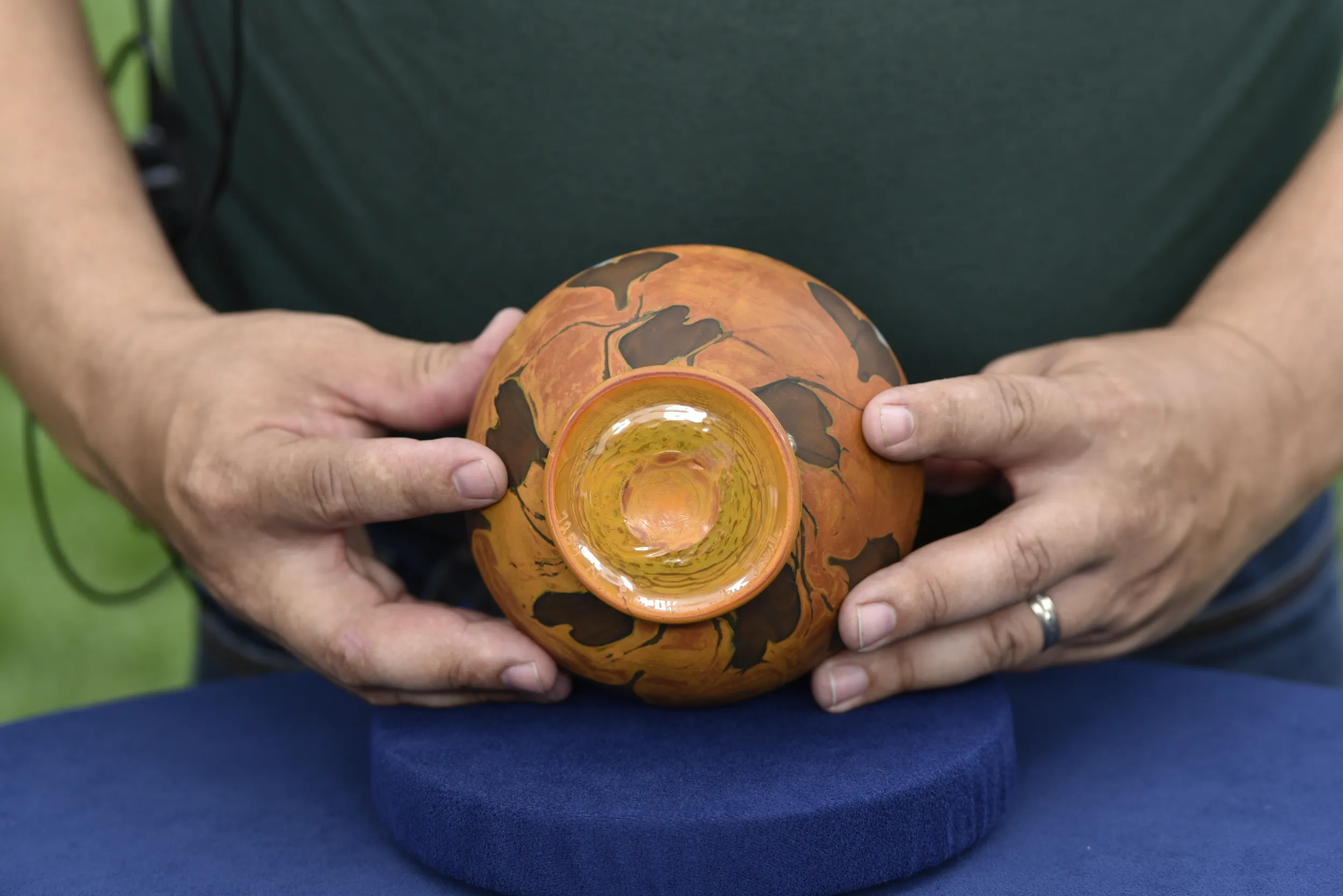GUEST: It belonged to my great-grandmother, who was a New Yorker. She lived in Dobbs Ferry and then would winter in Manhattan, staying at the Waldorf. It was handed down from her to my grandmother and then to me. My mother and ah the family was visiting my grandparents, and my birthday was coming up, and my mother said to my grandmother, "How about giving Tiffany," which is my name, "a Tiffany?" And my grandmother said, "Sure, which one do you want?" (laughs) Because there were three. Two of them were kind of boring-looking. I gravitated to this one because it was just so different.
APPRAISER: This vase was made at Louis C. Tiffany Furnaces, Inc. Oftentimes people confuse-- there are two companies. There was Tiffany and Company and then there were the companies that were owned by Louis Comfort Tiffany.
GUEST: Okay.
APPRAISER: And those were the companies that made the stained-glass lamps, and the windows, and the mosaics, and the blown glass, and the pottery.
GUEST: Okay.
APPRAISER: Louis was the son of the founder of Tiffany and Company, Charles Tiffany.
GUEST: Okay.
APPRAISER: So that's always very confusing. So this is a, it's actually a very unusual vase. In fact, I'm not sure I've seen another one like it.
GUEST: (chuckles)
APPRAISER: Which I love.
GUEST: Yeah.
APPRAISER: Um It was made in 1926. The reason I know that, on the bottom... It is very difficult to see, but it's signed with a number and then the suffix letter N, and then "L.C. Tiffany Inc. Favrile." That is an indication of the time period during the 1920s that's actually, they put an "Inc." in the signature. So that's one tip-off, but another tip-off is uh that there was a letter written to the editor of "Antiques Magazine" in 1926 asking the editor, um, "Could you please explain the numbering system?" A. Douglas Nash, who worked for Tiffany, explained how things were signed.
GUEST: Mm-hmm.
APPRAISER: And then he said, "We are now at the series N." So it couldn't be more plain. (both laughing)
GUEST: Right.
APPRAISER: In the 1920s-- particularly in the late 1920s, when Tiffany was actually really closing down-- there was a lot of experimentation and innovation in the glass-blowing department. And a lot of it was unsuccessful, but in this case, this was a crowning achievement.
GUEST: Oh, wow.
APPRAISER: It is a piece of case glass, meaning that there's more than one layer of glass that has been used in order to create the piece. The interior is almost like a brownish cherry color, and then the exterior that's sort of peeking out underneath this matte finish decoration appears to almost be like an agate finish.
GUEST: Mm-hmm. Yeah, I liked it because it looked like pottery, but it was glass.
APPRAISER: Everything that Tiffany made was a luxury item. This is art glass-- it's not meant to be used as a vase.
GUEST: Mm-hmm.
APPRAISER: Flowers are not meant to go into it, you're not supposed to...
GUEST: I've never put flowers in it. I've been too afraid of it. (both laughing)
APPRAISER: In a retail venue, I could see this selling for between $30,000 and $50,000.
GUEST: Oh, my God. Wow. (laughs) Wow. I had no idea.
APPRAISER: I think it's really lucky that you were named Tiffany.
GUEST: (laughs) Not after the jewelry store, after the family dog.
APPRAISER: No?
GUEST: That was named after the jewelry store, so... (laughs)
APPRAISER: It really is a gem.
GUEST: Yeah. Oh, wow, wow. That's amazing.














